40 how many calories are food labels based on
The Science Behind Calories and Nutrition Facts Labels The calorie number we see on food labels refers to a kilocalorie (kcal), which is also known as a large calorie or a food calorie. A kilocalorie is 1 000 calories. One kilocalorie is the amount of energy it takes to heat one kilogram of water one degree Celsius at sea level. How to read food labels: MedlinePlus Medical Encyclopedia The % daily value is included on the label as a guide. The percentage for each item on the label is based on eating 2,000 calories a day. Your goals will be different if you eat more or fewer calories a day. A dietitian or your provider can help you set your own nutrition goals. Alternative Names
How to Read a Nutrition Label - Lakanto Above the serving size is the serving per container. If you were to consume two servings of a food, then the serving size and all the numbers on the nutrition label would be doubled. 2. Calories. The calories are listed under the heading "Amount per serving." The calorie section tell you how many calories are in one serving of the food.

How many calories are food labels based on
Understanding Food Labels | The Nutrition Source | Harvard T.H. Chan ... One might assume the small bag to contain 1 serving, but it actually contains 3 servings so that eating the whole bag provides 300 calories. With the updated label, the same size bag would show 1 serving at 300 calories. Keep in mind that the serving size is not a recommendation for everyone about how much to eat, but rather a reference point. The Basics of the Nutrition Facts Label - Academy of Nutrition and ... Percent DV are for the entire day, not just one meal or snack. Daily Values are average levels of nutrients based on a person who eats 2,000 calories a day. A food item with a 5% DV of fat provides 5% of the total fat that a person who needs 2,000 calories a day should eat. You may need more or less than 2,000 calories per day. Learning To Read Labels :: Diabetes Education Online Let's practice with this example label. The serving size listed is 3 pieces (or 90 grams if you are weighing the product). The grams of total carbohydrate per serving is 30 grams. If you eat 6 pieces, that is two servings. You would be getting 60 grams of total carbohydrate (1 serving = 30 grams of total carbohydrate, 2 servings = 60 grams of ...
How many calories are food labels based on. why most food labels are wrong about calories answer key Jun 28, 2017 · In addition the number of calories is printed on food labels and lower calorie options are widely available in supermarkets. The U.K. policy on healthy eating suggests "putting calorie information on menus" and "helping people to eat fewer calories (for example by changing the portion size or the recipe of a product)." Food Labels: Carbohydrates | Home & Garden Information Center That means carbohydrates should supply 900 calories or more in a 2,000-calorie-a-day diet. Facts on Food Labels. Food labels contain clues to a food's carbohydrate content, including the amount per serving. ... for total carbohydrate is 300 grams (g) or 100% DV, based on a 2,000-calorie diet. This number combines several types of ... Calorie counts on nutrition labels may not be that precise - Los ... Science & Medicine Calorie counts on nutrition labels may not be as precise as you think A shopkeeper weighs almonds for a customer. Almonds used to have about 170 calories per serving, then... Reading Food Labels (for Parents) - Nemours KidsHealth The information on food labels is based on an average diet of 2,000 calories per day. But the actual number of calories and nutrients that kids need will vary according to their age, weight, gender, and level of physical activity. (For more guidance, check out the USDA's MyPlate .) Total Fat
Food Labels 101: Understanding the Nutrition Facts Label Nutrition labels are based on a daily 2,000 calorie diet. Depending on your age, gender and activity level, you may need to consume more or less than 2,000 calories per day, so keep this in mind when viewing each label. Now let's take a look at the parts of the nutrition facts label and break it all down. Anatomy of a Nutrition Facts Label How to Read Food Labels & Count Carbs | Allulose A food or beverage with a total fat PDV of 10% provides 10% of the total fat someone on a 2,000 calories per day diet should eat. The same goes with cholesterol and sodium. Keeping these in check, and looking for lower numbers, can help reduce risk of heart disease, high blood pressure and cancer. Get enough of Fiber, Vitamins, Minerals Your Guide to the New Food Label | National Kidney Foundation Food labels have percent daily values listed for a set group of nutrients based on the Food and Drug Administration (FDA) recommended 2000 calorie diet. You may need more or fewer calories, so check with your kidney dietitian. Using the daily percent values and ingredients listed, you’ll be able to choose foods within your special diet needs. How to Read Food Labels Without Being Tricked - Healthline Low-calorie products have to have one-third fewer calories than the brand's original product. Yet, one brand's low-calorie version may have similar calories as another brand's original. Low-fat.
Nutritionist Pro™ | Diet Analysis, Food Label, Menu Creation … Designed and managed by registered dietitians for your comprehensive nutrition analysis needs. From food labels to menus to recipe calculations, Nutritionist Pro™ makes all your food science needs a simple and streamlined process. Since 1982 over 1,000,000 have relied on the Nutritionist Pro™ family of products. Our software offers ... Food Labels: Fat & Cholesterol | Home & Garden Information Center The label does the math for you, putting all the numbers on the same scale of 0-100% DV for the day. These percentages are based on a 2,000-calorie daily diet, which is average for someone who is moderately active. Your daily values may be higher or lower depending on your calorie needs. The % DV column does not add up vertically to 100%. Learn How the Nutrition Facts Label Can Help You Improve Your Health The Nutrition Facts label on packaged foods is based on updated science and dietary recommendations for Americans. Using the label can help you choose foods for a healthy diet. The label is required on all packaged foods made in the United States and imported from other countries. The US Food and Drug Administration (FDA) issued regulations in ... Understanding Food Nutrition Labels | American Heart Association Remember that the information shown in the label is based on a diet of 2,000 calories a day. You may need less or more than 2,000 calories depending upon your age, gender, activity level, and whether you're trying to lose, gain or maintain your weight.
Food Labels | CDC - Centers for Disease Control and Prevention If you eat the whole thing, you are eating 8 times the amount of calories, carbs, fat, etc., shown on the label. Total Carbohydrate shows you types of carbs in the food, including sugar and fiber. Choose foods with more fiber, vitamins, and minerals. Choose foods with lower calories, saturated fat, sodium, and added sugars. Avoid trans fat.
How to Calculate How Many Carbohydrates Per Serving on a Nutrition Label To the right, the label also tells you what percentage of a typical 2,000-calorie diet's recommended intake this satisfies. Multiply the number of grams of carbohydrates per serving by the number of servings you take. For example, if 1 cup of the food provides 30 grams, and you serve yourself 1 1/2 cups, you eat 45 g of carbohydrates.
4-Week Emergency Food Supply (2,000+ calories/day) *Some individuals may want or need more than 2,000 calories per day, such as children, the elderly, and pregnant and lactating women. **It's best to store this emergency food supply in a dry, cool location—a dark area, if possible—at temperatures between 55°F and 70°F. Actual shelf life may vary based on individual storage conditions ...
Understanding Ingredients on Food Labels | American Heart … 06.03.2017 · Food labels are an important source of information about calories and the nutritional value of the foods you eat, a crucial tool in building a heart-healthy diet. The Nutrition Facts information is always displayed in the same orderly fashion and helps you understand how much of certain nutrients that you need to limit are contained in the product per serving.
How Do They Calculate Calories on Food Labels? His 4-9-4 method came up with an average of 4 calories per gram of protein, 9 calories per gram of fat, and 4 calories per gram of carbohydrate that is still in use today. For example, using the Atwater method, a box of crackers that contains per serving... 5 grams of fat (5 x 9 = 45 calories) 22 grams of carbohydrate (22 x 4 = 88 calories)
PDF Parent Tips: How to Use the Nutrition Facts Label Nutrition Facts Label Most packaged foods have a Nutrition Facts label. This tip sheet ... *Percent Values are based on a 2,000 calorie diet. Your Daily Values may be higher or lower depending on your calorie needs: Calories . 2,000 2,500 Total Fat Less Than ; 65g 80g Sat Fat Less Than 20g 25g
How to Read the Nutrition Facts Label on Packaged Foods - WebMD The American Heart Association recommends that everyone limit sugar to no more than 6 teaspoons or 100 calories a day for women, and no more than 9 teaspoons or 150 calories per day for men. Those...
How Many Calories to Feed Your Dog Per Day - The Spruce Pets Aug 15, 2022 · The daily feeding recommendations on the label can be used as a general guideline and are fine for many dogs. However, you may need to adjust the amount you feed based on your dog's needs. Dog food labels typically list the kcal per cup or can of food. The kcals may also be listed by the amount per kilogram.
Calories on the New Nutrition Facts Label | FDA - U.S. Food and Drug ... One package of food may contain more than one serving, so, if you eat two servings you would be getting two times the calories shown on the label. For example, if you ate one serving of the food...
Amazon.com : Miracle Noodle Angel Hair Pasta - Plant Based … Amazon.com : Miracle Noodle Angel Hair Pasta - Plant Based Shirataki Noodles, Keto Pasta, Vegan, Gluten-Free, Low Carb Pasta, Paleo, Low Calories, Soy Free, Non-GMO - Perfect for Your Keto Diet - 7 oz (Pack of 6) : Shirataki Noodles : Grocery & Gourmet Food
How to Understand and Use the Nutrition Facts Label | FDA That is two times the calories and nutrients shown in the sample label, so you would need to double the nutrient and calorie amounts, as well as the %DVs, to see what you are getting in two...
Food Labels | Nutrition.gov What's New with the Nutrition Facts Label. HHS, Food and Drug Administration. The U.S. Food and Drug Administration (FDA) has updated the Nutrition Facts label on packaged foods and beverages with a fresh design that will make it easier for you to make informed food choices that contribute to lifelong healthy eating habits. What's in a Name?
Nutrition Facts table formats - Food labels - Canadian Food … For example, a standard format is suitable to provide nutrition information based on one serving of food as sold; horizontal or linear formats are not used; the largest version (size) of an appropriate format listed in the top level of the decision …
Food Labels (Lesson 15) - LSU AgCenter The Nutrition Facts label is found on food packages and shows the amount of calories per serving, servings per container, specific nutrients and the amount of each nutrient given in grams and percent daily value based on a 2,000-calorie diet.
Figuring Out Food Labels (for Kids) - Nemours KidsHealth The information on food labels is based on an average adult diet of 2,000 calories per day. The actual number of calories and nutrients that kids need will depend on their age, weight, gender, and level of physical activity. (For more guidance, check out the USDA's MyPlate .) Comparing Labels
How Many Treats to Give a Dog a Day - American Kennel Club 30.08.2021 · Scientifically speaking, a kcal is a kilocalorie, or 1,000 calories. Dog food manufacturers, however, must have figured out that “kcal” doesn’t roll off the tongue the same way “calories ...
How To Read Food and Beverage Labels - National Institute on Aging The percent Daily Value (% DV) tells how much a nutrient in a serving of the food or beverage contributes to a total daily 2,000-calorie diet. Although the average person needs 2,000 calories a day to maintain their weight, individuals may need more or fewer depending on their lifestyle.
What Do Calories Mean in Food and Exercise? - Verywell Fit 12.10.2021 · Although fiber is a carbohydrate, it is not easily digested by the body, so calories from fiber are estimated by the U.S. Food and Drug Administration to be 1.5 calories for 1 gram. By checking the nutrition facts label on food, you can see how many calories in a serving come from each of these sources.
Learning To Read Labels :: Diabetes Education Online Let's practice with this example label. The serving size listed is 3 pieces (or 90 grams if you are weighing the product). The grams of total carbohydrate per serving is 30 grams. If you eat 6 pieces, that is two servings. You would be getting 60 grams of total carbohydrate (1 serving = 30 grams of total carbohydrate, 2 servings = 60 grams of ...
The Basics of the Nutrition Facts Label - Academy of Nutrition and ... Percent DV are for the entire day, not just one meal or snack. Daily Values are average levels of nutrients based on a person who eats 2,000 calories a day. A food item with a 5% DV of fat provides 5% of the total fat that a person who needs 2,000 calories a day should eat. You may need more or less than 2,000 calories per day.
Understanding Food Labels | The Nutrition Source | Harvard T.H. Chan ... One might assume the small bag to contain 1 serving, but it actually contains 3 servings so that eating the whole bag provides 300 calories. With the updated label, the same size bag would show 1 serving at 300 calories. Keep in mind that the serving size is not a recommendation for everyone about how much to eat, but rather a reference point.


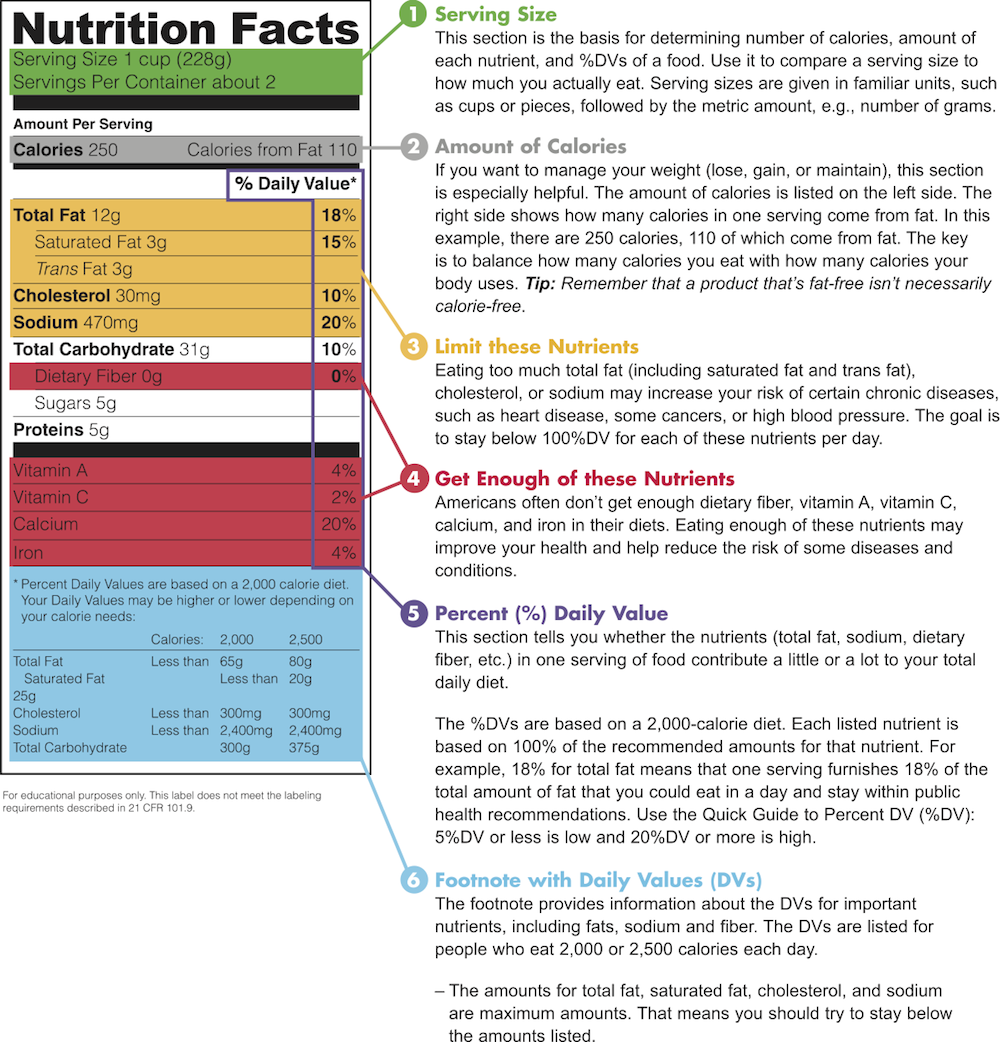



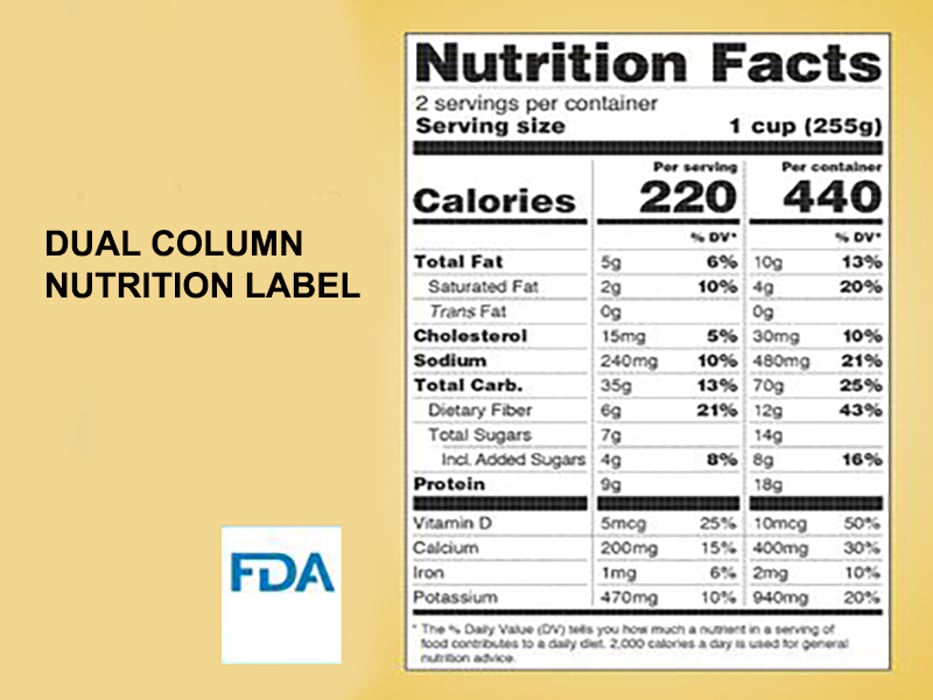
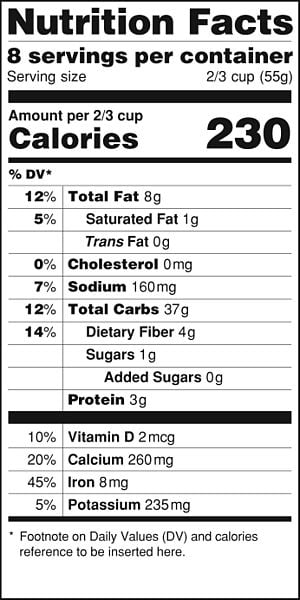

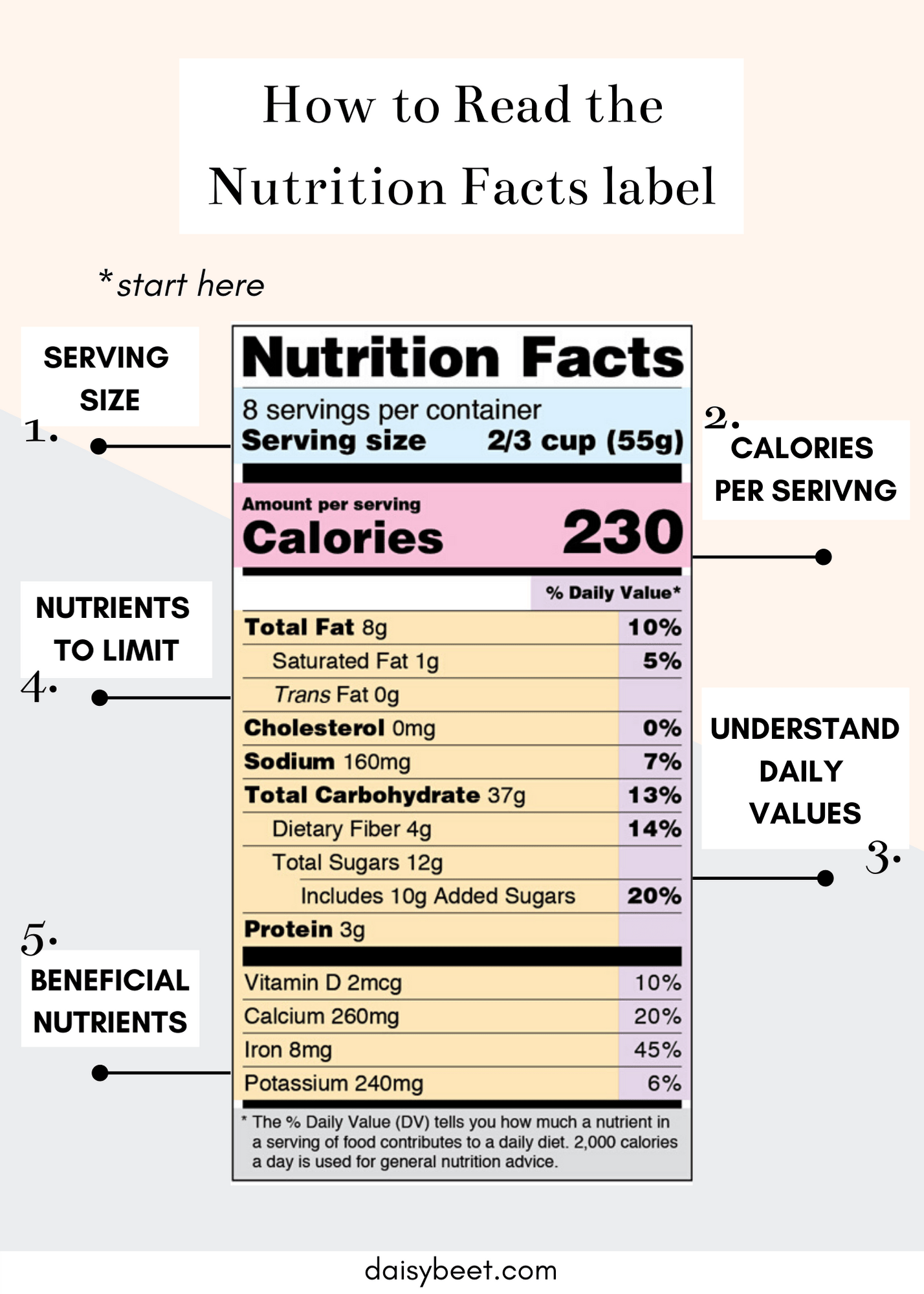
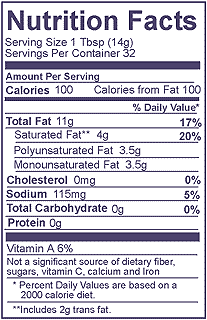

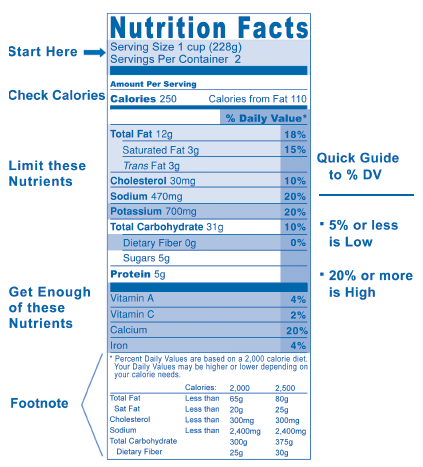
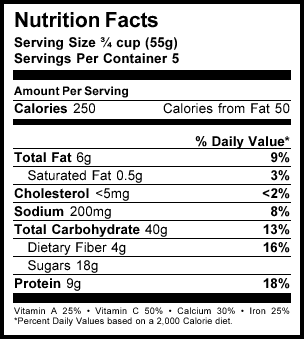
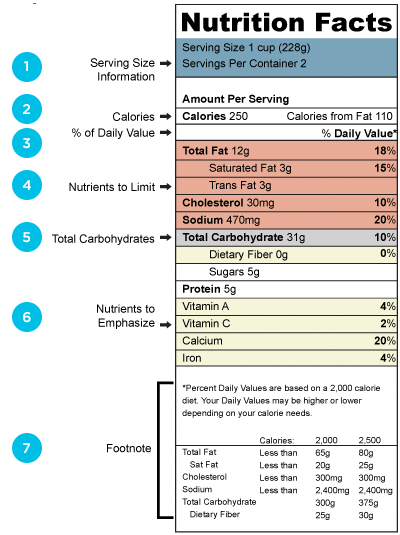
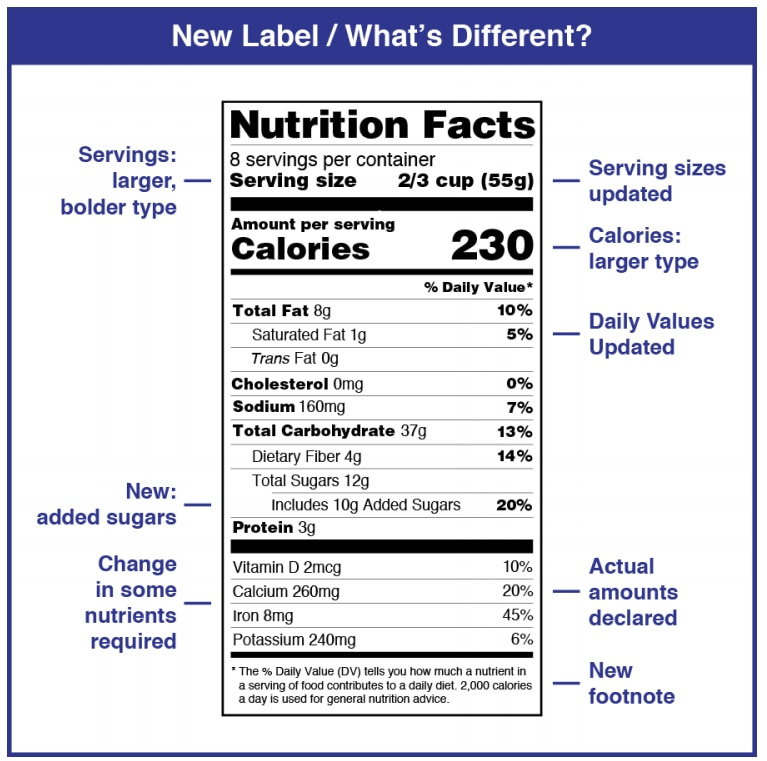
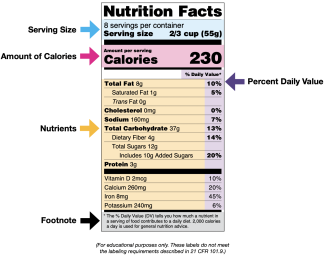
:format(jpeg)/cdn.vox-cdn.com/uploads/chorus_image/image/49640337/shutterstock_84910150.0.0.jpg)



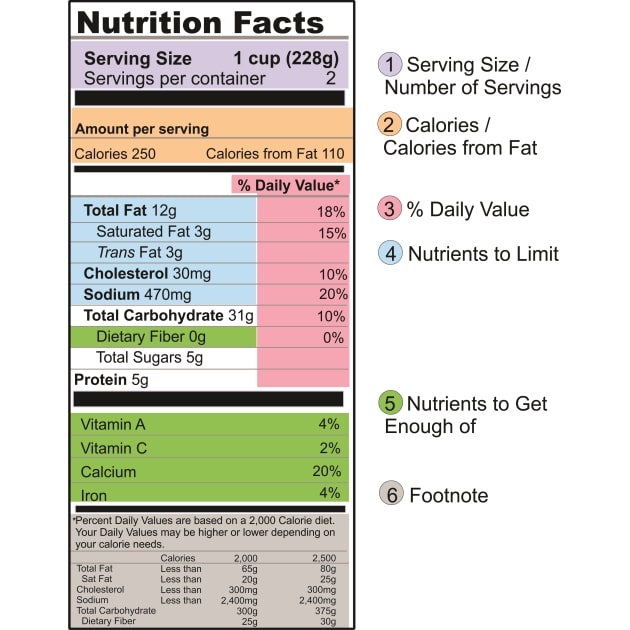
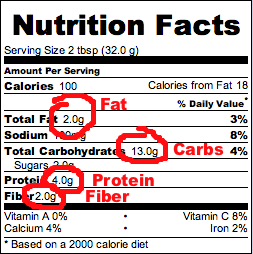
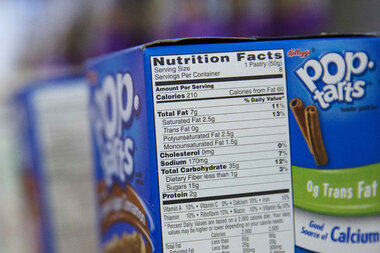


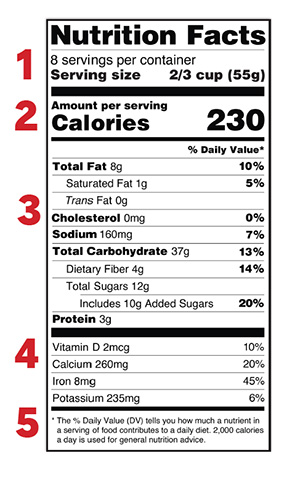
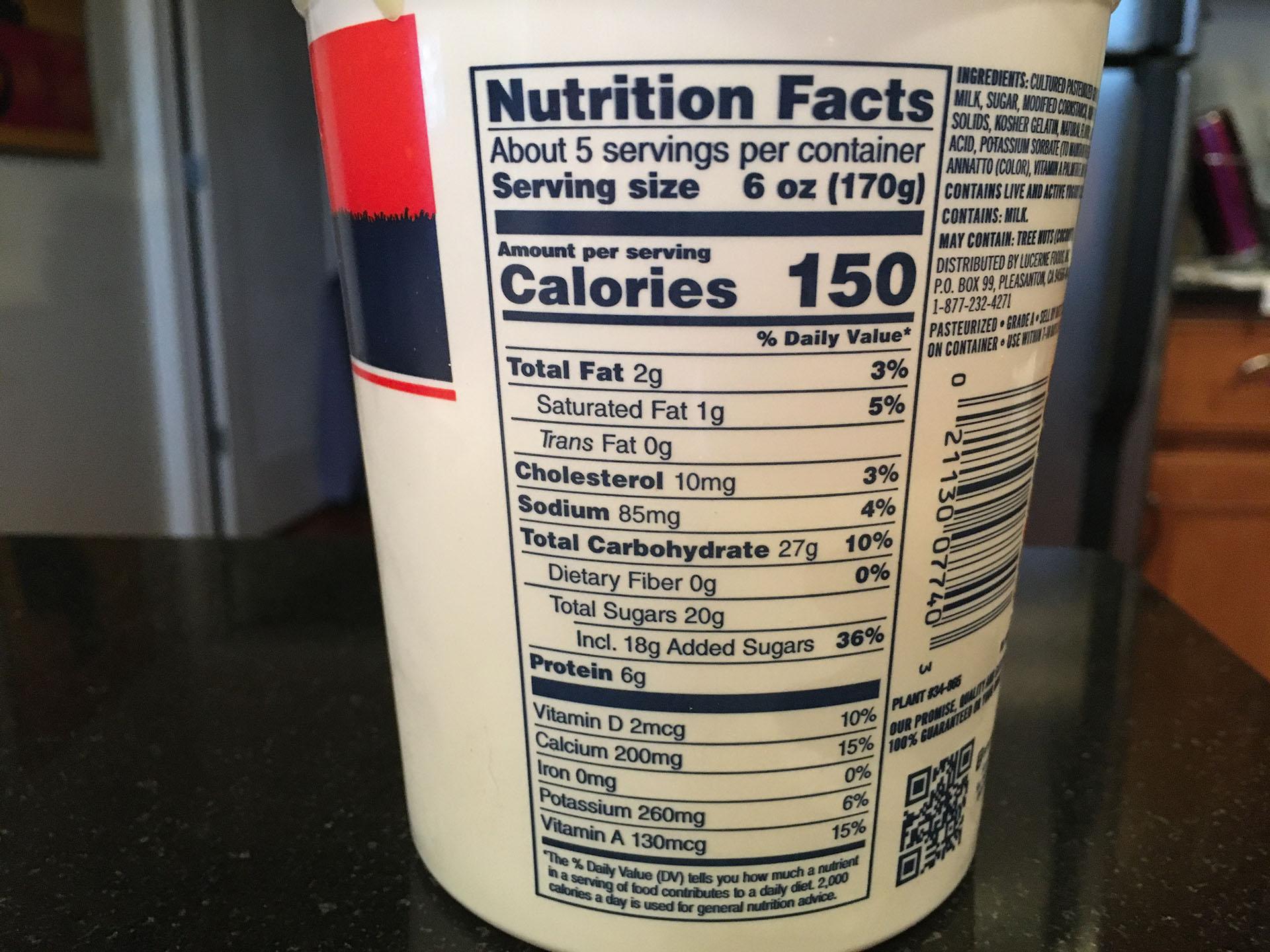

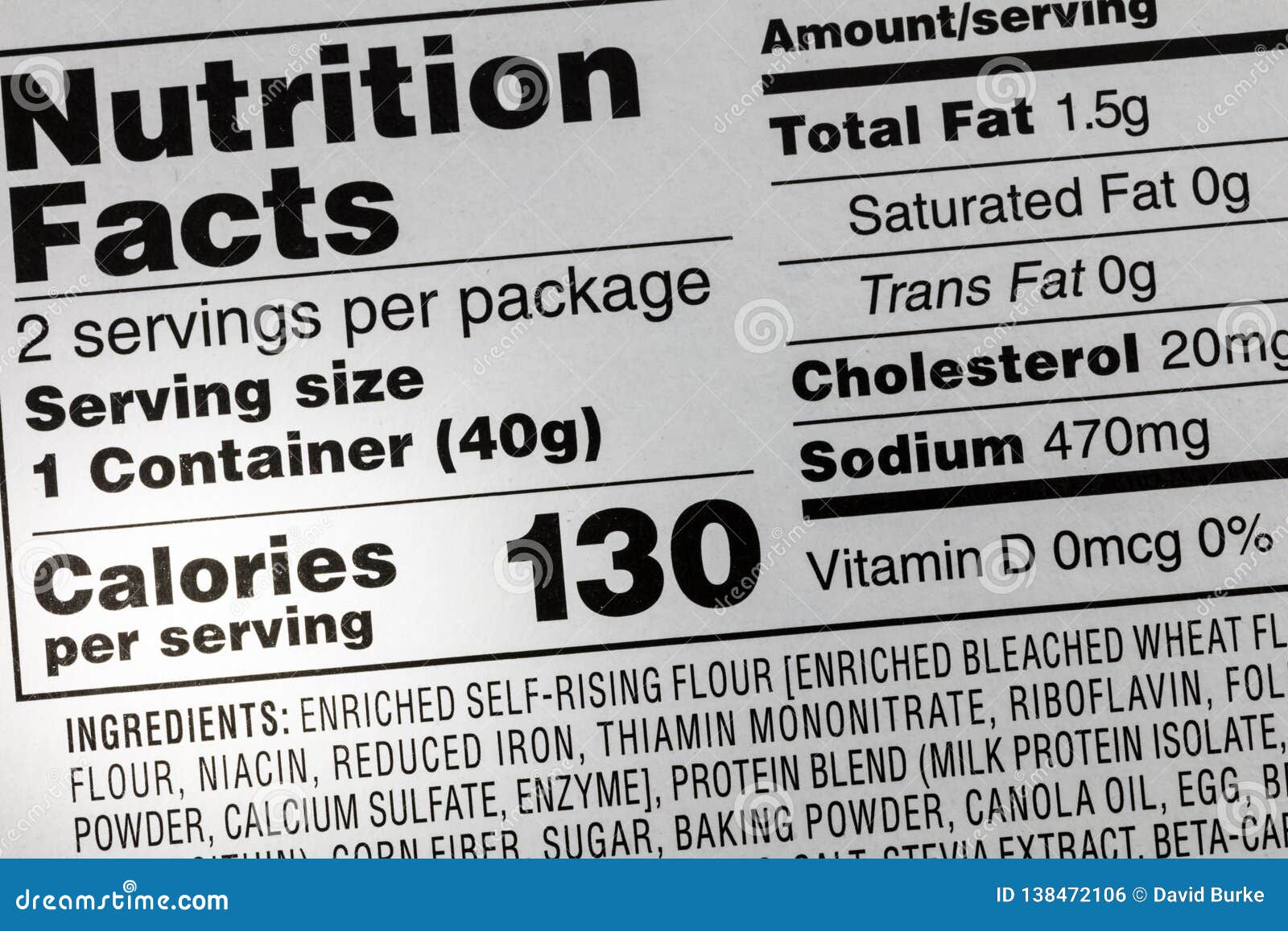
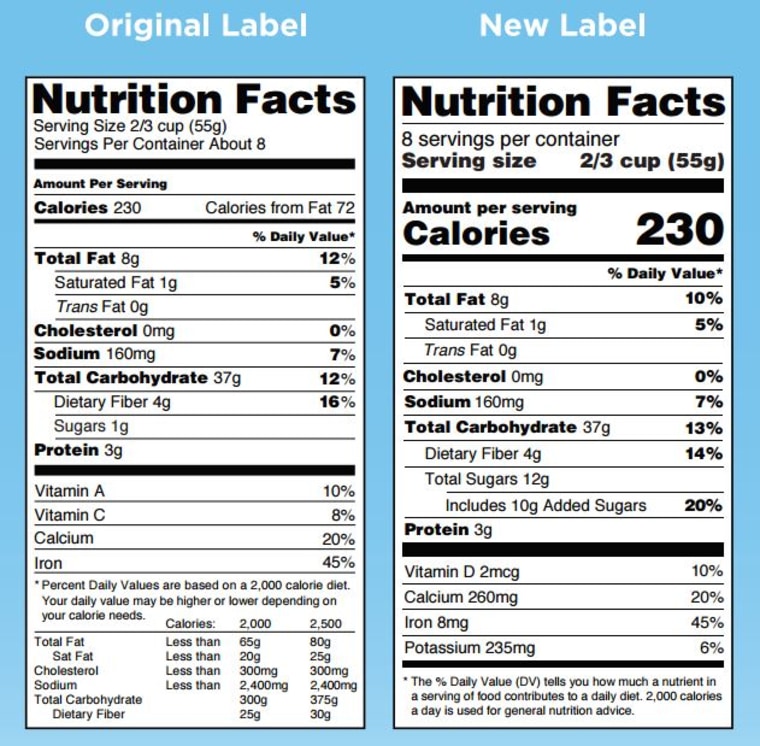



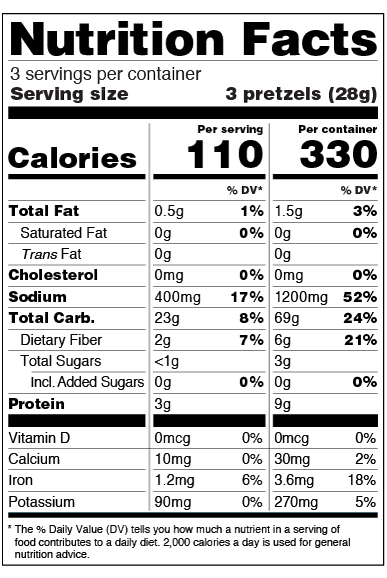
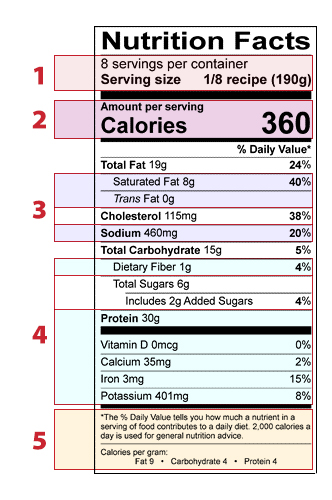
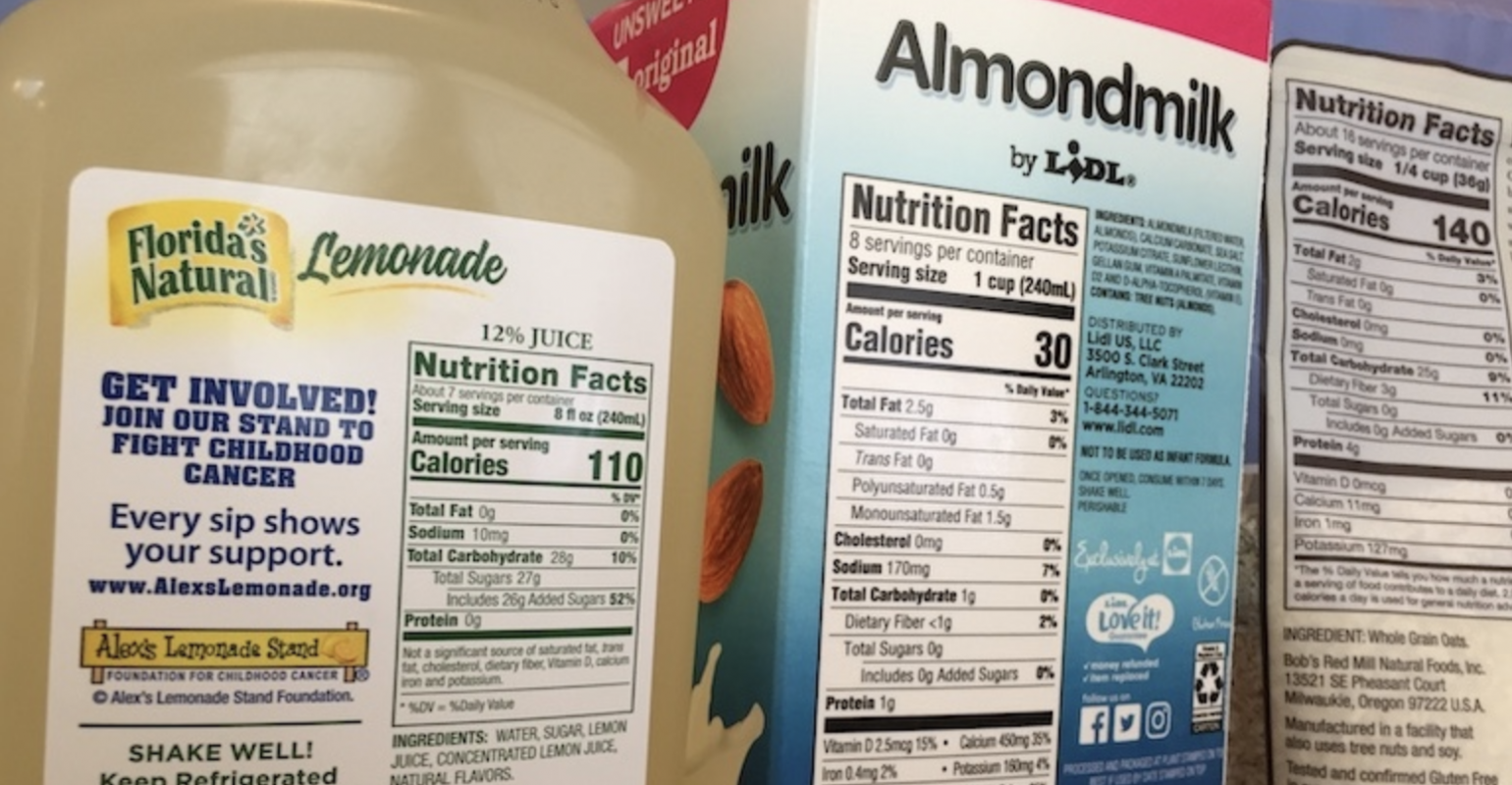
Post a Comment for "40 how many calories are food labels based on"